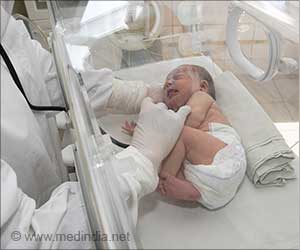New therapies for neonatal HIE aim to repair brain damage and promote neuroregeneration. From antioxidants to stem cells, the future of neonatal neuroprotection is bright.

Neuroprotection for neonatal hypoxic-ischemic encephalopathy: a review of novel therapies evaluated in clinical studies
Go to source). HIE is the reason for the deaths of over half a million worldwide each year. Therapeutic hypothermia is the standard treatment for moderate to severe HIE. Many infants treated with hypothermia still experience significant motor, cognitive and behavioral disabilities by school age.
‘New therapies are emerging to protect newborns from Hypoxic-Ischemic Encephalopathy (HIE), targeting brain injury mechanisms like inflammation & oxidative stress. #neuroprotection #HIE #newbornhealth #medindia’





In low-income regions therapeutic hypothermia is unavailable and the need for new, accessible treatment is urgent. Therapies for Neuroprotection in Neonatal Hypoxic-Ischemic Encephalopathy
A recent review has highlighted cutting-edge approaches to protect the newborn brain. These therapies target complex mechanisms of HIE related brain injury including inflammation, oxidative stress and cell death.- Anti-excitotoxic agents like magnesium sulfate and xenon can limit brain damage caused by excessive glutamate release.
- Antioxidants such as allopurinol and melatonin reduce oxidative stress and improve the condition when combined with other therapies.
- Multi-mechanism agents like cannabidiol and caffeine promote neuroregeneration while addressing multiple pathways of injury.
- Stem cell therapy can repair brain damage through regenerative mechanisms.
Challenges in Implementing Alternative Therapies
Preclinical studies show promising results but implementing these therapies into effective clinical treatments for neonatal HIE presents many difficulties:- Identifying the ideal time for administering neuroprotective therapies with the timing of hypoxic-ischemic events is important.
- The timing, severity and location of brain injury in hypoxic-ischemic encephalopathy can vary significantly between individuals.
- Need for reliable biomarkers that can assess the severity and progression of brain injury in real time, which can lead to more personalized and accurate treatment.
- Safe and effective delivery of these therapies to infants poses a significant challenge.
- Neuroprotection for neonatal hypoxic-ischemic encephalopathy: a review of novel therapies evaluated in clinical studies- (https:onlinelibrary.wiley.com/doi/10.1111/dmcn.16184)
Source-Medindia








